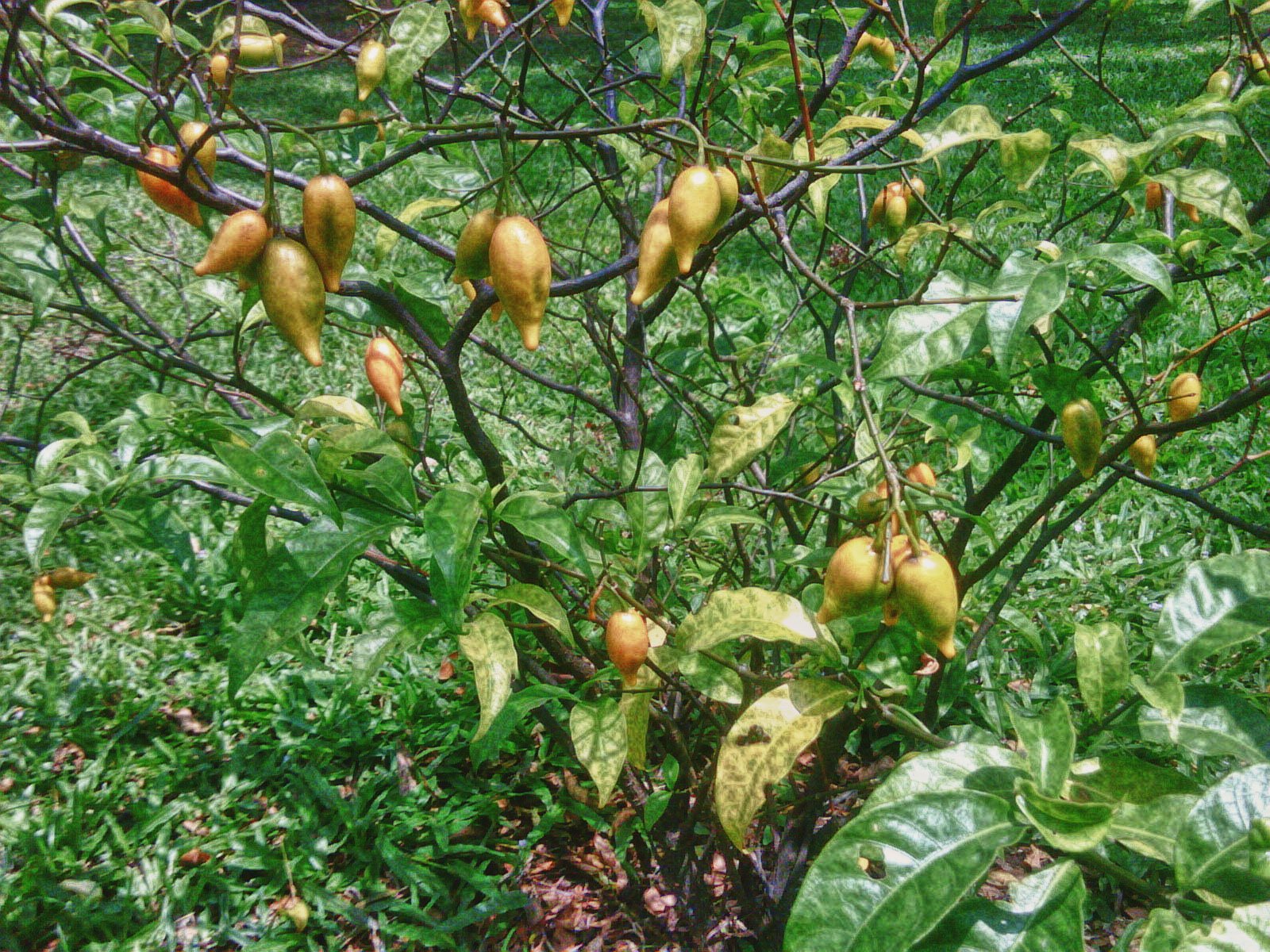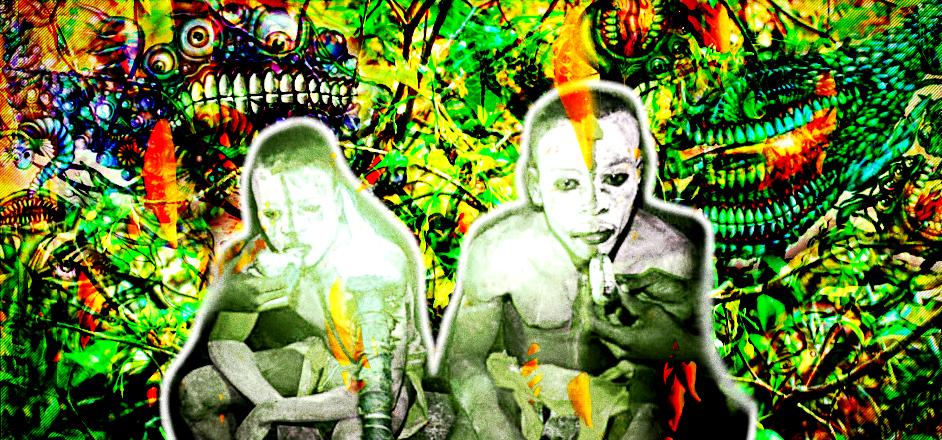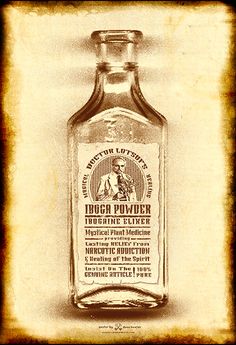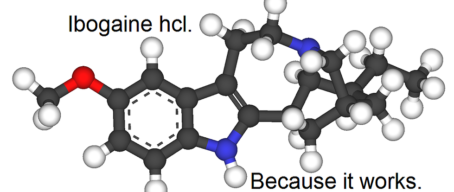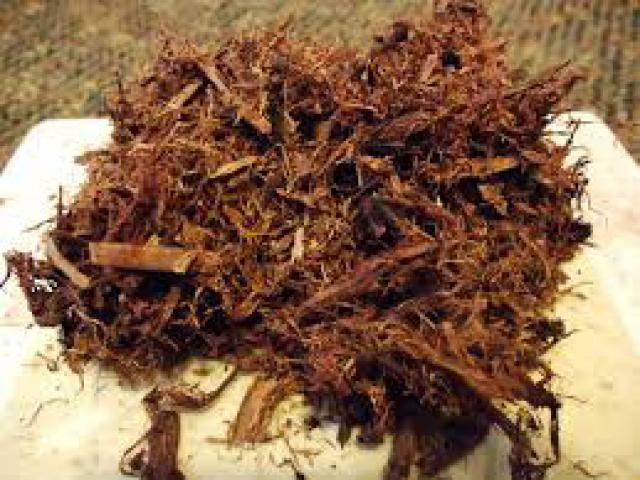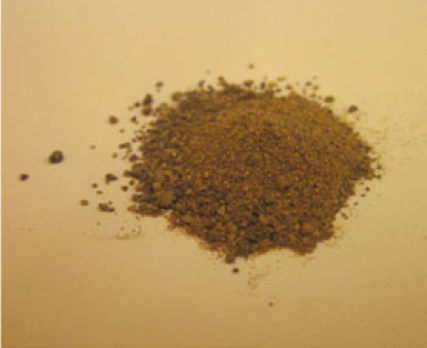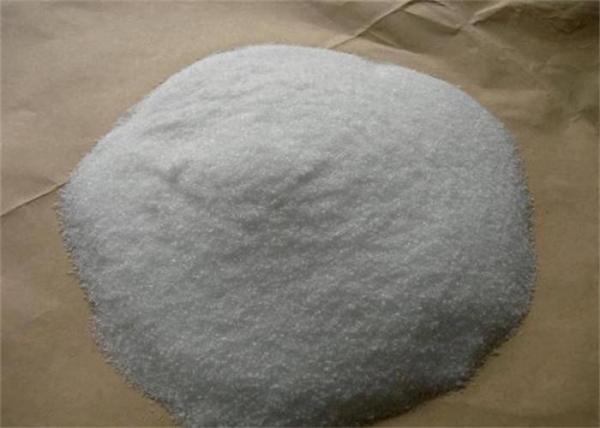Lotsof realizes he had to gain credibility in the scientific community. So he buries himself in the library, forms a non-profit corporation and files a patent for Ibogaine. (This could be seen as a pretty cavalier case of cultural appropriation, as is too often the case – yet another case of a white man patenting the knowledge of indigenous peoples, even if in the name of a greater good.) Unfortunately Lotsof meets only indifference and skepticism at the National Institute of Drug Abuse (NIDA). Those who do take interest, like Dr. Doris Clouet, lose credibility and eventually their jobs. Such are the risks of working with stigmatized substances, regardless of the science behind them.
Large pharmaceutical laboratories show no interest either. Between the fact that Ibogaine comes from a plant (so any patent can only be for its applications) and the fact that it is a Schedule I illegal substance, getting Ibogaine to market would mean a lot of investment for a relatively small return. As an example, the official response from pharmaceutical company Ciba-Geigy was: “While the indication for narcotic addiction withdrawal is almost certainly worthwhile, it has not been identified as a strategic commitment for our company”. It’s strange to think of the ramifications of private medicine, of all the peoples’ lives that could have been saved or at least who could’ve benefited from Ibogaine had it only been a more “strategic commitment” to private corporations.
The non-profit route seems to be a dead end. In 1986, Lotsof starts a private company offering shares and gets some investment this way. With this money, Lotsof finances the first International Conference on Ibogaine in 1987. He also flies to Gabon and convinces President Omar Bongo to give researchers enough iboga to do research (Bongo had previously deemed iboga to be a “strategic national heritage product” and made it illegal to export from Gabon).
The first human experiments with Ibogaine were done in Holland, the only country at the time to have a real policy for the prevention of drug addiction. At the same time, research with Dr. Stanley Glick back in the U.S. shows that Ibogaine will reduce self-administration of morphine in rats, which is very promising.
Ibogaine finally gets its chance in the post-Reagan AIDS era due to the growing call for harm reduction. Harm Reduction calls for prevention, safe sex, de-stigmatization of HIV positive people, the development of treatment, needle exchange, and for the therapeutic use of cannabis. ACT UP, a large direct action advocacy group, learns how to work the lobbying process and get the required media attention at the same time, gradually gaining some influence in the political sphere. Dana Beal joins their ranks, and those in the U.S. harm reduction struggle against AIDS now take on the Ibogaine cause as well.
Unfortunately, there are some huge stumbling blocks for Ibogaine. Before scientists can conduct research on classified substances, they must get permission from both the Drug Enforcement Administration (DEA) and the National Institute of Drug Abuse (NIDA). Scheduled substances face a lot of stigma and ostracizing, and most respectable scientists don’t want to be associated with this kind of research.
To get around this, Lotsof has scientists from the US brought to observe treatments in Holland. One such example was Dr. Carlo Contoreggi, who worked for the Addiction Research Center (ARC) of NIDA. Dr. Contoreggi, who was used to working with addicts, was absolutely flabbergasted:
This tall, straight, athletic-looking guy walks in. No pallor. No trace of withdrawal. In fact, he’s radiating good health, looks like he’s been working out. There’s a bounce in his step, a twinkle in his eye. The thing is, I’m a clinician – an M.D., not a rat scientist. I knew we had nothing in development that could do that. It’s physically impossible in that time frame.
Unfortunately this enthusiasm reaches the ears of ARC director Dr. Jerome Jaffee, a conservative and total adversary of Ibogaine. He doesn’t want to hear anything about successful treatments. Jaffee actually threatens to send Contoreggi off to a different department if he continues his work examining Ibogaine treatments before and after. Jaffee himself then goes on to undertake a study called “Ibogaine Doesn’t Work”, based on a single study of rats. These results contradict the findings of all previous studies on Ibogaine.
Dr. Glick’s team of researchers do an Ibogaine study at the same time, demonstrating the real effectiveness of Ibogaine. Unfortunately this won’t be published until 1991, a year after Dr. Jaffee’s research is published, due to low funding. In the meantime, resistance at NIDA and the ARC starts to build.
Nevertheless, Lotsof and the Ibogaine movement persevere. In 1990, the march to “Stop the Drug War” from Boston to Washington is a big success. Dhoruba Bin Wahad, ex-member of the Black Panther Party, is one of the speakers at the rally. A former political prisoner and hero with African American activists, Bin Wahad adopts the Ibogaine cause. He believes Ibogaine is a weapon from Africa against the “genocide” (his term) inflicted upon his community by drugs – drugs that he claimed were distributed with the complicity of the CIA. It is through Bin Wahad’s outspokenness that many other African American activist groups join the Ibogaine movement as well.
In June 1991, Lotsof makes contact with Dr. Deborah Mash at the University of Miami who wants to conduct clinical research on Ibogaine. It just so happened she was married to a high-ranking Democrat who had Hillary Clinton’s ear. Clinton promises to do something about Ibogaine once her husband takes office. Dr. Mash drafts a first phase of trials and receives FDA approval.
While ACT UP’s efforts manage to get Ibogaine on NIDA’s list of “medications to be evaluated for the treatment of addiction”, NIDA simultaneously opposes any clinical trials and bans even pre- and post-treatment evaluations, saying they could be seen as tacit approval by NIDA. This would prove to be NIDA’s modus operandi, claiming to be working towards Ibogaine research, but sabotaging it all the way.
A new study of forty treatments emerges from Holland. In the study, 25% of addicts gave up hard drugs for good after a single treatment. Another 25% found it worked to keep them sober at least a month. An additional 15% find that they are no longer interested in drugs after trying them again and are therefore clean after six months. This constitutes a 40% success rate. The other 35% are able to conquer their addiction with additional monthly Ibogaine treatments in conjunction with Narcotics Anonymous programs. The total success rate then becomes 75%, an absolutely astounding result in the world of addiction.
ACT UP comes bearing this study as well as research from Dr. Glick’s team showing that Ibogaine is not just a maintenance drug like methadone. In response, NIDA actually presents a plan for a phase of clinical trials within a year’s time. But first, the Ibogaine team will have to redo the toxicity studies in rats. As Dr. Peter Hartsock later criticized, the strategy was basically to block ibogaine by endlessly prolonging trials on rats and hoping for a failure at that stage so that things would never move forward to human research.
Meanwhile more and more researchers take the initiative to work on Ibogaine and more articles on Ibogaine are published in 1992 than in all previous years combined. Lotsof comes back from Holland with the first HIV-positive patient treated with Ibogaine. She had been addicted to heroin and methadone. Post-treatment she is clean and her disease is even in remission. This earns ACT UP and Ibogaine a lot of press.
Unfortunately, just as Ibogaine reaches peak levels of media attention, two conflicting studies come out. Dr. Mark Molliner’s study showed that Ibogaine was neurotoxic when injected into rats at 100 mg/kg. Of course the standard dose for anti-addiction treatment is 17 mg/kg and that dose is taken orally, but media reports don’t often go into that kind of nuance. Dr. Mash’s results on monkeys show no cerebral toxicity but unfortunately she was only able to conduct tests on three monkeys. Of course, the media latches onto the rat study, portraying Ibogaine as a controversial and “dangerous” treatment for addiction.
In 1994 the biggest internal defender of Ibogaine in ACT UP, Robert Rygor dies. Divisiveness reigns. The Ibogaine cause seems to compete with that of needle exchanges. ACT UP also faces stigma from other organizations, which accuse it of being a front organization for legalizing marijuana and Ibogaine. In the end, Rygor’s death marks the death of an ACT UP-supported Ibogaine movement as well.
Meanwhile, things still look promising as NIDA meets with Ibogaine experts in May 1994. All teams agree that at therapeutic doses, Ibogaine is not neurotoxic. The FDA’s Doctor Curtis Wright is satisfied, saying, “It sounds to me you folks have a Phase I clinical trial”. NIDA makes all the proposals for detailed clinical trials but sets no dates. In fact, the trials would never take place.
The elections of 1994 bring unwanted change for the Ibogaine crusaders, with Republicans pushing a tough line on drugs, bringing back the drug war of the Reagan era. The Democrats, under political pressure, follow suit, competing on who is the “toughest on drugs”.
The anti-Ibogaine militants take advantage of this new atmosphere. A last official meeting on Ibogaine takes place at NIDA. All Ibogaine experts (including Mark Molliver whose study had originally found neurotoxicity in rats) agree that it is safe to move forward with Ibogaine trials in humans. But Frank Vocci, the conservative associate director at NIDA, brings in external consultants who have never worked in this area. They, of course, say they do not believe any treatment can act to break addiction.
In the end, Vocci decides to stop everything, even the preclinical investigations. No more public funds will be invested, the death knell for Ibogaine research. Vocci later justifies this saying that Ibogaine opponents were more convincing. But in reality, the clinical trials were put aside due to pressure from the Republican pharmaceutical industry lobbyists. The FDA would take a more liberal approach and approve Dr. Mash’s research in Miami but in the end the FDA has no influence over NIDA and the requests of Mash’s team are denied.
All legitimate research with Ibogaine has now ended, with this sharp right turn in U.S. drug policy. President Clinton is persuaded to crack down on marijuana use and his drug czar calls ibogaine “a dangerous and addictive hallucinogen, and a trick”.
Looking back at Ibogaine’s failure, Agnés Paicheler notes that it was almost inevitable due to the number of obstacles in the way:
Arising out of African rituals similar to sorcery, promoted by former hippies, ex-junkies, and African American activists, and erroneously labeled as a hallucinogen, Ibogaine was laboring under a bad image, as much in terms of deserving to be taken seriously as from the standpoint of morality…even among scientists, there are many who don’t want to even hear of Ibogaine, quite simply because that would mean admitting that non-scientists, and on top of that actual drug users, had made an important discovery.
In the end, Ibogaine was of no financial interest to anybody, and that’s mostly what this came down to. Political decision makers would have had to show enormous dedication to Ibogaine to bring it through legalization as a prescription medicine through public sector funded research.
And that was never going to happen. Ibogaine is a dangerous competitor to the commercial sector from anti-addiction treatments. In fact the promoters of methadone were the first to block Ibogaine’s development. Even certain scientists, whose entire careers were based on methadone, had fought Ibogaine research.
There may be additional cultural factors at play as well. In this morally conservative country, addicts are seen as “guilty” and deserve to “pay” for their mistakes. It would almost be too soft a punishment, allowing addicts to just be “cured” – especially by taking a “hallucinogenic drug”. Indeed, it would make a mockery of our drug laws to have a schedule I drug turn out to be a lifesaver.
And so Ibogaine waits in the wings, for modern medicine to approach it once more. Somehave worked illegally treating people with Ibogaine within the United States. Ibogaine clinics all over the world (in places like Mexico and Costa Rica, where it is legal) continue to treat addicts, but often at a steep price. It was through a legal iboga treatment center that this writer kicked her two-year ketamine addiction, and met many others who have kicked their habits as well. It’s not a magic bullet, the person has to be willing to do the work themselves to stay clean. But it’s a hope in a world where there isn’t much hope to be found.

